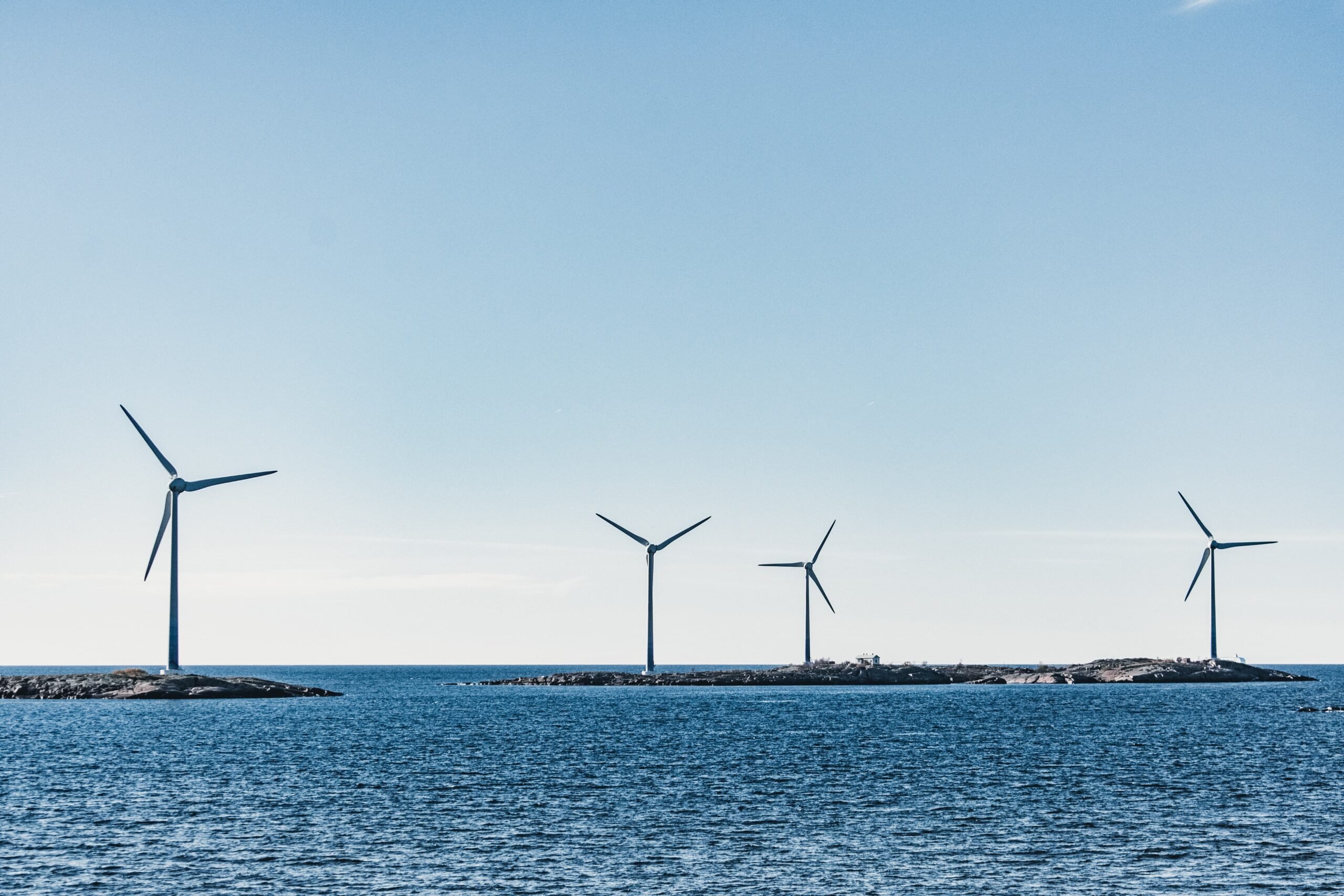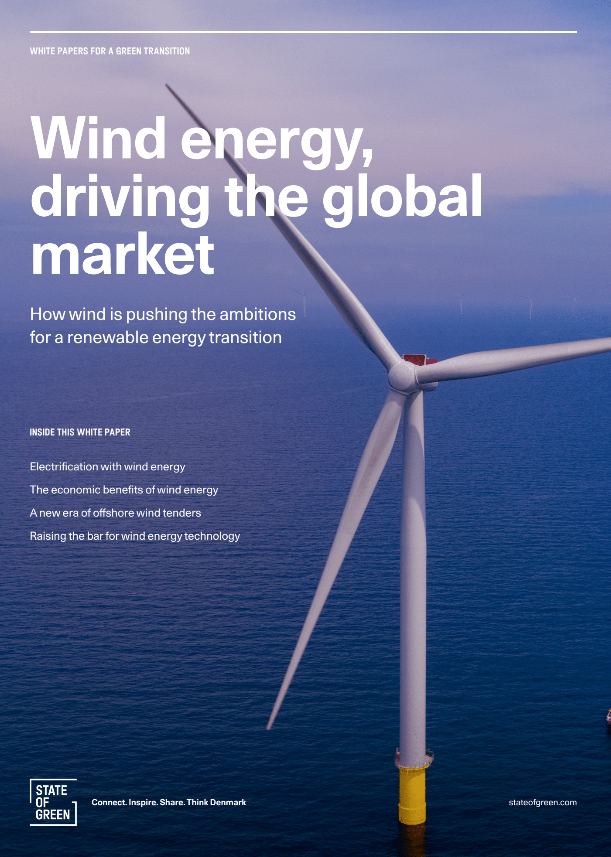Download our publication on wind energy today
This article is part of our publication ‘Wind energy’.
Download nowPerspective
Offshore wind
Wind energy


The Danish Sea area (12 nautical mile zone, exclusive economic zone and internal waters) covers 105,000 km2 of largely shallow waters. This makes it both significantly larger than those of the Netherlands, Germany, and Poland, and ideal for bottom-fixed wind turbine foundations. The latter being a prerequisite for producing cost efficient wind power offshore. Denmark’s proximity to load centres like the United Kingdom, Benelux, Germany, and Poland provides opportunities for connecting offshore wind farms directly to neighbouring markets.
Over half of the 300 GW offshore wind capacity that the EU aims to install by 2050 is expectedly located in the North Sea. A large share of this could be installed cost-competitively in Danish waters.
Today, the Danish electricity consumption is around 35 TWh. Through direct and indirect electrification, the electricity demand is expected to increase to 50-70 TWh by 2030 in step with Denmark’s emission reduction targets. By 2033, the Danish offshore wind capacity will alone comprise 7 GW, generate up to 40 TWh by 2035, and surpass the current Danish electricity consumption. This means that Denmark stands to become a net exporter of electricity in the next decades.
Traditionally, offshore wind farms have been planned and built as single projects with single radial connection directly to shore. This changed in 2012 with the Danish decision to build the Kriegers Flak Offshore Wind Farm in the Baltic Sea in conjunction with an interconnector between Denmark and Germany: A so-called ‘hybrid asset’. Hybrid assets benefit from the ability to fully utilise the transmission system by both transporting power produced from an offshore wind farm to shore and serving as an interconnector. When there is excess capacity in the cable because the wind farm is not operating at full load, the cables of Kriegers Flak acts as an interconnector, importing and exporting electricity, to the benefit of Danish and German power producers and consumers. A need for fewer cables combined with higher cable utilisation rates have lowered overall project costs and investment needs.
As offshore wind farms grow and move further from shore, great synergies can be achieved by combining more projects into offshore ‘hubs’ or ‘islands’ with shared transformation and connections to more markets. Denmark aims to build two such energy hubs. One by the island Bornholm in the Baltic Sea with an initial capacity of 2 GW offshore wind connected to both Denmark and Germany. The intention is to use Bornholm as a fixed platform for a transmission substation and potentially an operation and maintenance base. The hub can later be expanded with more capacity and connections to e.g., Germany and Sweden. The second energy hub, constructed as an artificial island about 80 km off the west coast of Jutland, will initially cover around 120,000 m2 , supporting the infrastructure required for 3 GW offshore wind farms by 2033.
Phase 2 includes the expansion of the physical island up to 460,000 m2 and up to 10 GW.

This article is part of our publication ‘Wind energy’.
Download now